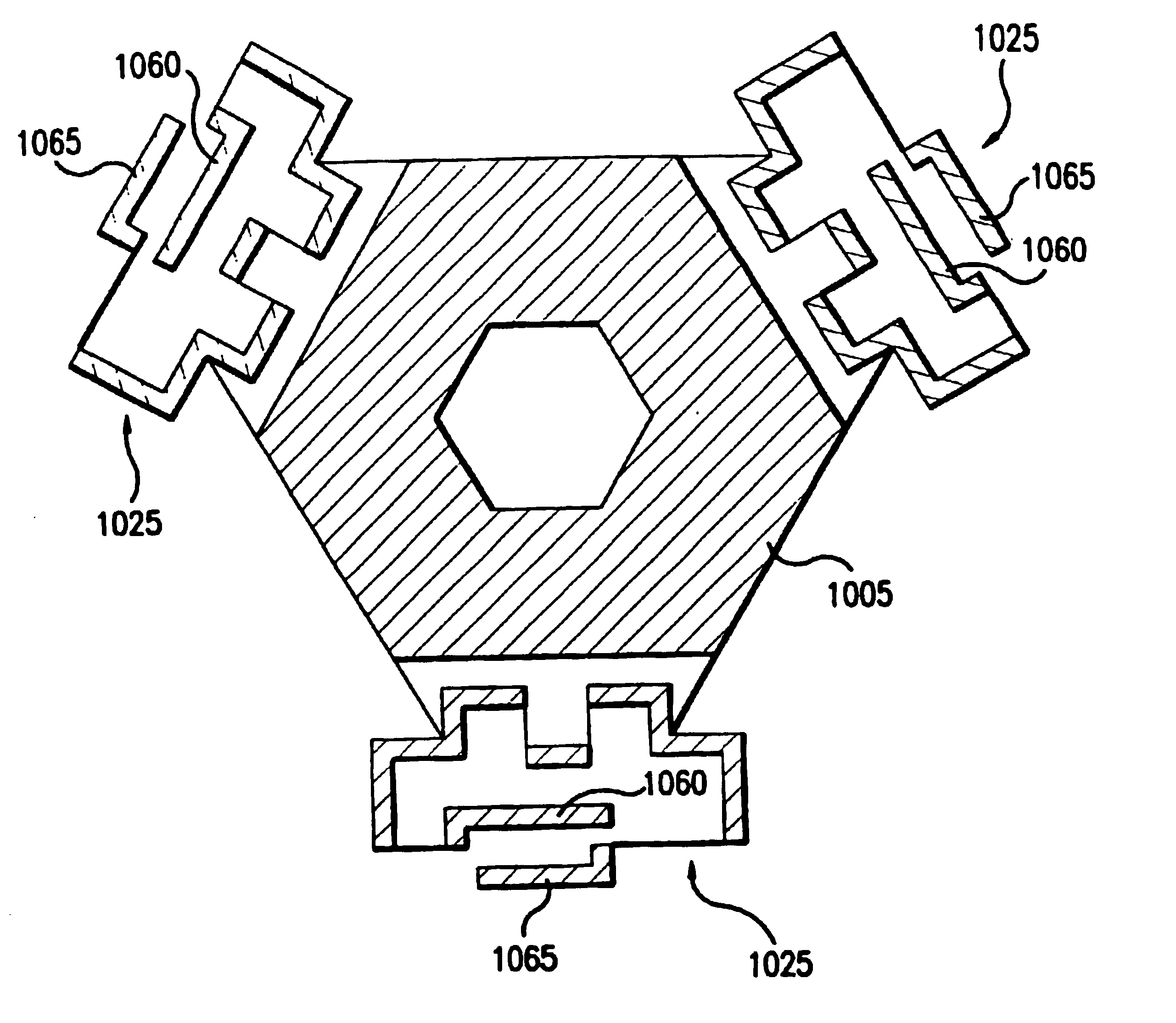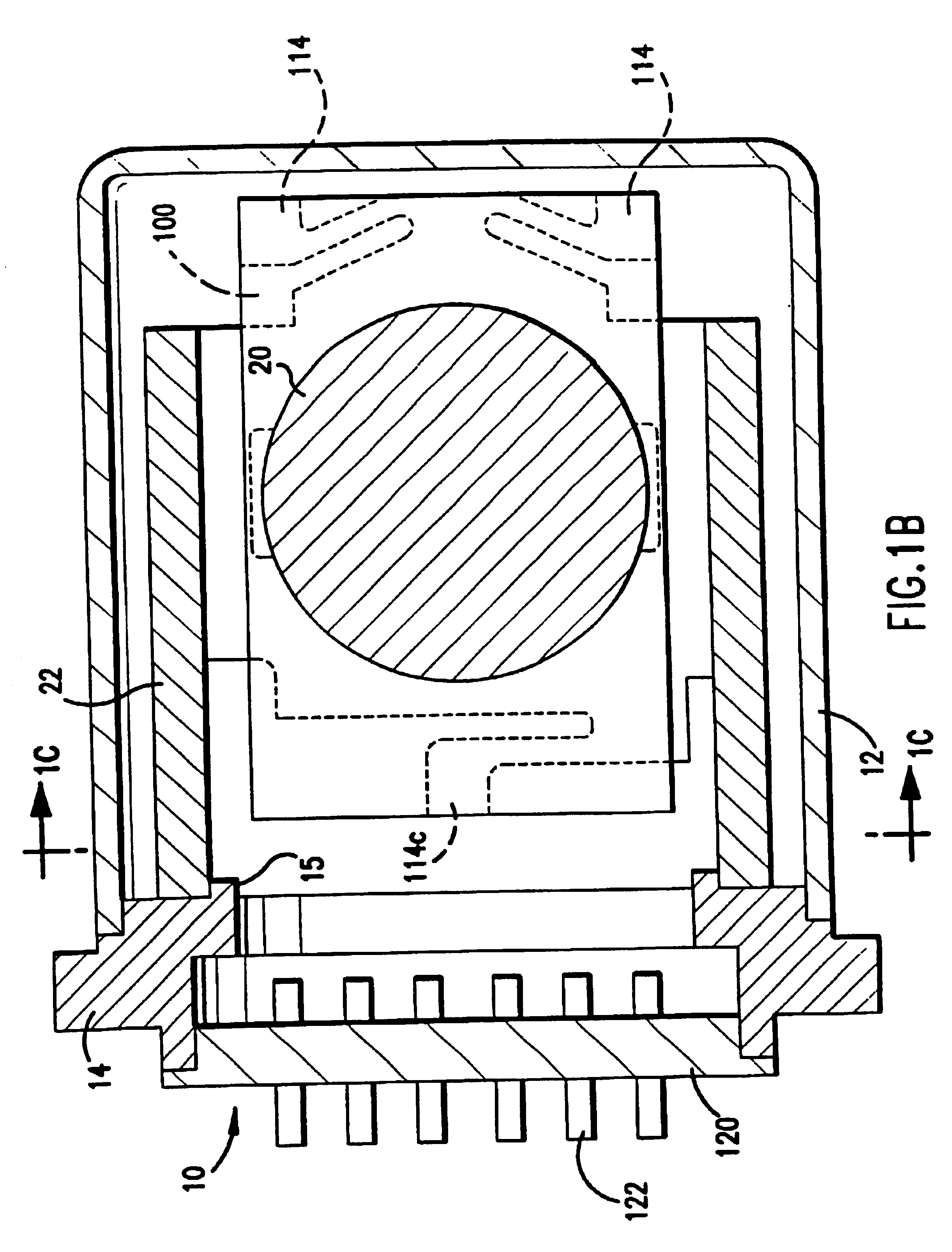Triaxial angular rate and acceleration sensor
a technology of acceleration sensor and angular rate, which is applied in the direction of turn-sensitive devices, couplings, instruments, etc., can solve the problem of not measuring angular rate, and achieve the effect of preventing angular acceleration sensitivity
- Summary
- Abstract
- Description
- Claims
- Application Information
AI Technical Summary
Benefits of technology
Problems solved by technology
Method used
Image
Examples
Embodiment Construction
Referring now to the drawings, FIGS. 1A, B, C and D show the arrangement of a rate and acceleration sensor 10 according to the present invention. The sensor 10 includes a shell 12 housing a unitary substrate 16, which is illustratively made of silicon and in which is formed, illustratively by micro-machining, a pair of accelerometers 32a and 32b disposed in side-by-side relation such that their input axes 38a and b are disposed in opposite directions (see FIG. 1D). The sensor 10 also includes a unitary magnet 20 and a flux path assembly 18, which provides a magnetic path for directing the flux emanating from the magnet 20 through the substrate 16 and its first and second accelerometers 32a and b. As will be explained, the configuration and disposition of the accelerometers 32a and b within the substrate 16 permits a simple, straightforward magnetic flux path to effect the operation of the dithering motion and the vibration of a sensor element of the accelerometers 32a and b.
Referri...
PUM
 Login to View More
Login to View More Abstract
Description
Claims
Application Information
 Login to View More
Login to View More - R&D
- Intellectual Property
- Life Sciences
- Materials
- Tech Scout
- Unparalleled Data Quality
- Higher Quality Content
- 60% Fewer Hallucinations
Browse by: Latest US Patents, China's latest patents, Technical Efficacy Thesaurus, Application Domain, Technology Topic, Popular Technical Reports.
© 2025 PatSnap. All rights reserved.Legal|Privacy policy|Modern Slavery Act Transparency Statement|Sitemap|About US| Contact US: help@patsnap.com



